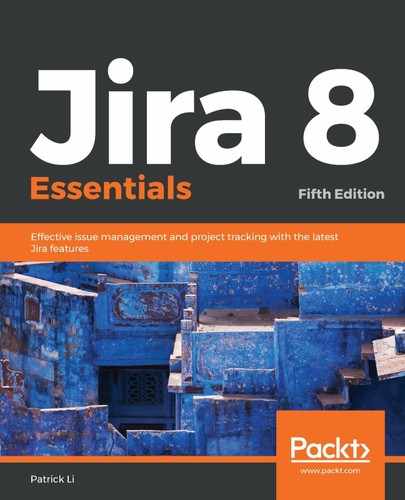Once you have the backlog populated, the next step is to estimate and prioritize the issues so that you can plan and build a schedule of how to complete them. In Jira, prioritizing issues in the backlog means moving them up and down in the backlog by dragging and dropping. To increase the priority of an issue, you can simply drag it higher in the backlog list. While it is usually the product owner's responsibility to prioritize which features to deliver first, the team should also be involved in this process to make sure that everyone is in sync regarding the direction of the project.
Estimating work is a critical part of Scrum, and the success of your sprints heavily depends on how well you and your team can estimate. One thing people often get confused about is that they tend to think of estimation in terms of time; for example, story A will take 5 hours to complete and story B will take 10 hours. While this may seem right at first, what would often end up happening is that people will either work extra hard to make the estimate seem accurate or give big estimates because they are uncomfortable with the task at hand. This can lead to big problems as the project goes on, since nobody wants to be known as either the person that cannot give a reliable estimate, or the person that is inefficient because he/she constantly goes over estimates.
One way to avoid this pitfall is to use something arbitrary for estimation called story points, which is the default estimation method in Jira. The idea behind this is to measure and estimate issues based on their complexity, rather than the time required to complete them. So if you start a sprint with a total of 10 story points worth of issues, and at the end of the sprint you are unable to complete all of them, this might indicate that you have been too aggressive and may need to reduce your expectations. Since the estimation is not made based on the time taken, it simply indicates that perhaps the issues are too complex, and you will need to break them down further into more digestible pieces. This helps to prevent people from feeling like they are constantly running against the clock, and also helps you better define and break down tasks into smaller, more manageable chunks.
Sometimes, however, you might find it difficult to estimate the complexity of your stories. This is usually a sign that you either do not have enough information about the story or that the story's scope is too big and needs to be broken down. It is important for the team to realize this and not shy away from going back to ask more questions so that they can fully understand the purpose of the story before providing an estimate.
Now that we have determined a way to estimate our issues, we can move on. Entering the estimate is as simple as doing the following:
- Select the issue to estimate from the backlog.
- Enter the number of story points into the Estimate field, as shown in the following screenshot:

